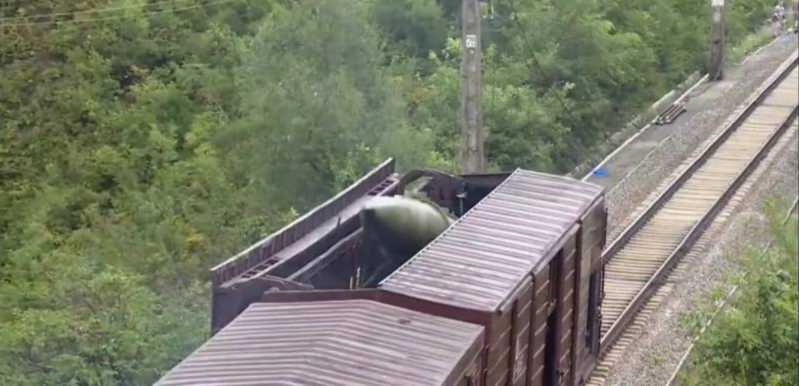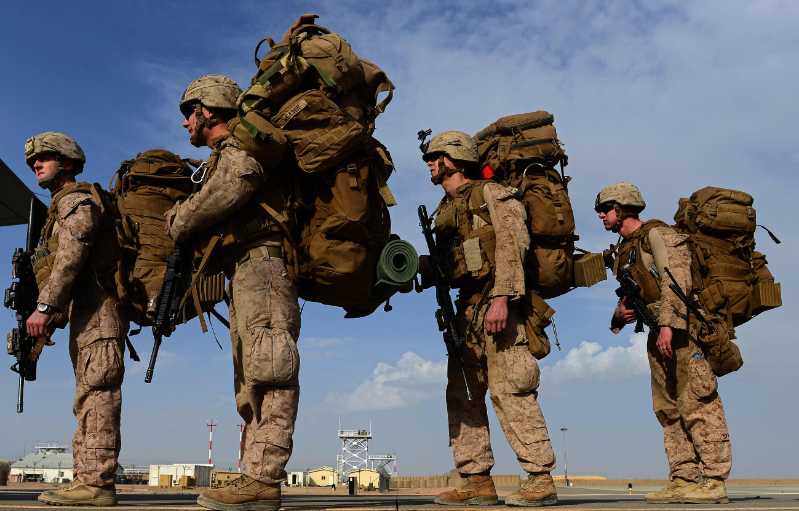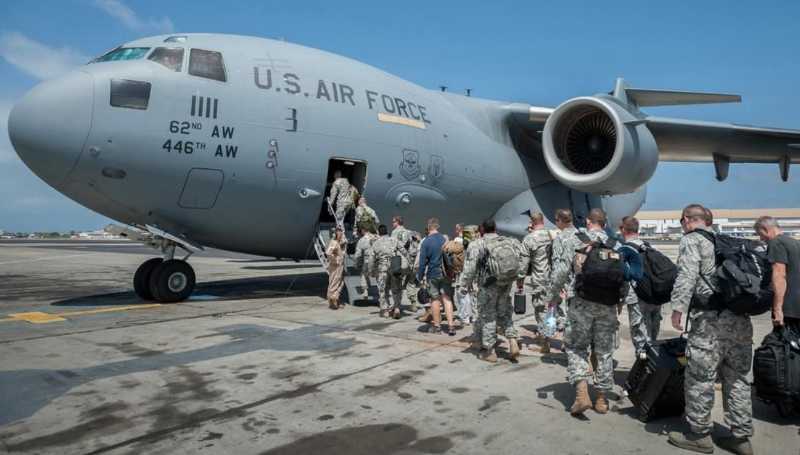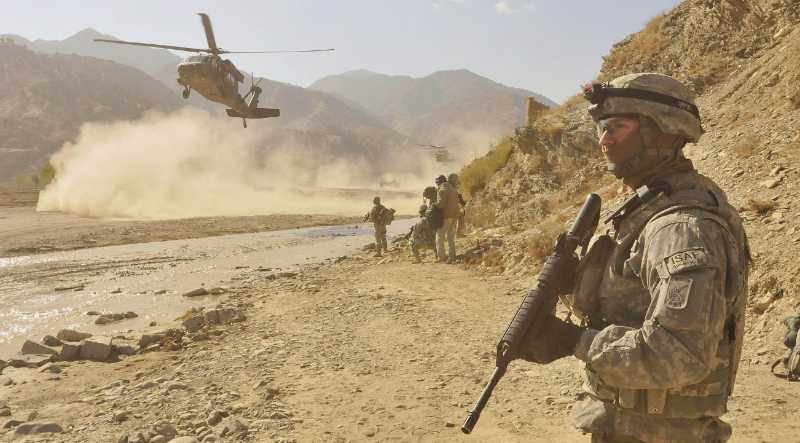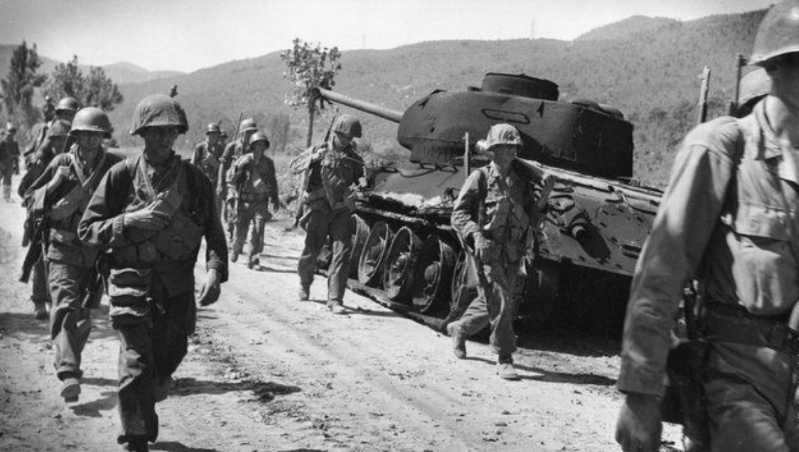On September 15, 2021, North Korea’s railway-mobile missile was unexpectedly tested on the same day as South Korea’s submarine-launched missile. This was the first public appearance of North Korea’s railway-mobile missile force, and then the launch site video was released, which seemed to confirm the existence of the only railway-mobile ballistic missile system in the world. So, how much "gold content" does North Korea’s railway-mobile ballistic missile system have? Let’s take a look slowly.
Basic situation of North Korea’s railway-mobile missile test
It should be said that North Korea’s test of railway-mobile missiles shocked and confused the outside world, because after all, only superpowers such as the United States and the Soviet Union have developed railway-mobile ballistic missiles, and there was no news that North Korea had such development plans before.
Background
Since the beginning of 2021 after Biden took office as the US President, although North Korea has conducted 3 to 4 missile tests from the beginning of 2021 to the summer of 2021, they were basically short-range missiles, no new models appeared, and the performance was relatively low-key. But then it began to concentrate on testing multiple new models of missiles. The launch of the railway mobile missile took place just two days after the announcement of the test launch of a new long-range cruise missile. The South Korean and US reconnaissance systems found that North Korea launched two ballistic missiles from its central inland area into the eastern waters of the peninsula. At first, the outside world believed that this was just North Korea’s countermeasure to South Korea’s missile test, using ordinary ballistic missiles. But North Korea soon released relevant pictures and videos and claimed that it had completed the launch training of the railway mobile missile regiment. This surprised the outside world. North Korea not only developed a railway mobile missile system, but also deployed it in an organized manner.
Launch organization
From the information released by North Korea and external reports, the launch was carried out at about 12:34 and 12:39 noon on September 15, and two ballistic missiles with a range of 800 kilometers were launched continuously into the Sea of Japan. North Korea claimed that its missile forces received a training mission in the early morning of the 15th and then moved to the mountainous area in central North Korea, hitting the target area set within the 800-kilometer limit. The report emphasized that the purpose of this training is to determine the practicality of the railway mobile missile system deployed for the first time in actual combat, to evaluate the combat readiness and firepower mission execution capabilities of the newly formed missile regiment in an unexpected way, and to master the actual combat operation procedures. Although North Korea did not announce the missile model, the missile launched this time was called KN-23 by the outside world according to the statement of the North Korean official media and the accompanying photos. Pak Jong-cheon, member of the Standing Committee of the Political Bureau of North Korea and Secretary of the Party Central Committee, directed the launch on the spot and said that the deployment of the railway mobile missile system is of great significance in strengthening the country’s war deterrence.
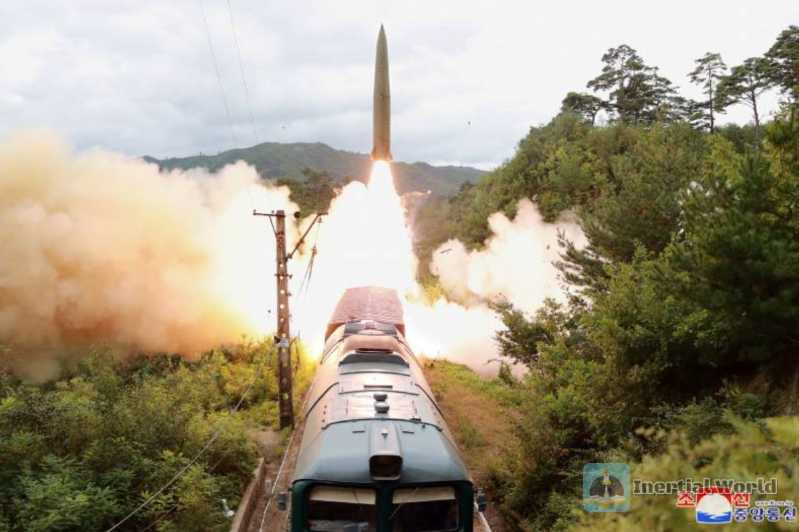
Response
This launch has received great attention from South Korea, the United States, Japan and other countries. South Korea’s Joint Chiefs of Staff revealed that the launch was carried out from Yangdeok County, South Pyongan Province. During the test, two missiles flew about 800 kilometers, with a maximum trajectory of more than 60 kilometers. Japan and the United States also expressed serious concern, claiming that this launch was the second time North Korea launched a ballistic missile in violation of the UN Security Council resolution after March 25, 2021. Kim Yo-jong, vice minister of the Central Committee of the Workers’ Party of Korea, said that North Korea’s missile launch was not a "provocation" against a certain party, but was to implement the key topics in the five-year plan for national defense science development and weapon system research and development proposed by the Eighth Congress of the Workers’ Party, and was a normal self-defense activity. Subsequently, North Korea released the video of the railway missile launch, providing clues for the outside world to understand this "only railway mobile missile" in the world.
The composition of North Korea’s railway mobile missile system
Power system
The biggest highlight of the railway launch system announced this time is its railway mobile system. Judging from the photos and videos, North Korea’s railway mobile missile system is mainly composed of a train head and two missile launch carriages. Each missile launch carriage is equipped with two missiles. The interior of the train head should have been modified and equipped with command and communication equipment. From the outside, the entire train formation adopts a configuration of one M62 head towing two standard carriages. The head of this train is a diesel locomotive, which North Korea allegedly named K62 "Nova". M62 is a general-purpose diesel locomotive jointly developed by the Soviet Union and Eastern European countries. It is 17.4 meters long, 2.9 meters wide, 4.6 meters high, with a curb weight of 120 tons and a maximum speed of 100 kilometers. 100 km/h. The derivative of this vehicle was used in the Soviet Union’s "Scalpel" SS-24 railway mobile missile train system, which was previously the only one in service in the world, to drive a 17-carriage formation, including 3 groups of 9 launch modules-each module consists of 1 launch vehicle, 1 support vehicle and 1 command vehicle, as well as 1 regimental command vehicle, 1 communication vehicle, 1 power generation vehicle, 1 fuel vehicle, 1 food and water vehicle, 1 dining vehicle and 2 living vehicles. Compared with the Soviet SS-24 system, North Korea’s formation is more compact and powerful.
Carrying/launching system
From the published video, the launch car should be converted from a standard freight train car. The standard P61 car of the same type weighs 23.9 tons: the load capacity is 60 tons, and the length of the car is about 15 The biggest feature of this carriage is that it has a 3-meter-wide horizontal push-type movable door in the middle of the carriage. One of the two carriages is the launch vehicle. From the video, North Korean engineers put two KN-23 The erection devices of the missiles are staggered in the middle of the carriage, and the sliding door in the middle can facilitate the maintenance and inspection of the erection devices by the support personnel. Flame exhaust ports are designed on both sides of the carriage to facilitate the discharge of high-temperature flames when the missile is ignited. The carriage roof is changed to two hatches that can be opened to both sides, which minimizes the impact of the first missile launched on the missiles in the carriage. In addition, in order to ensure stability during high-speed operation, the train carriages are designed with shock-absorbing and buffering mechanisms, which is extremely unfavorable for the initial aiming of the missile. Because on an unstable platform, the missile-borne gyroscope and other equipment cannot be calibrated, and the violent vibration during the launch process will also cause the missile to vibrate. Moreover, the huge recoil force on the platform during the missile launch will also exceed the load-bearing limit of the carriage chassis, ultimately leading to a launch failure. Therefore, after the missile is erected, the carriage needs to be rigidly connected to the ground. Whether it is a road-mobile or railway-mobile launch platform, several jacks will be designed to adjust the level of the launch platform and achieve a rigid connection with the ground. From the video, four dark jacks extend from the side of the launch carriage to fix the carriage during launch. From the outside of the entire launch car, after all the doors and hatches are closed, the train head and missile launch car are almost the same as ordinary freight trains, and the camouflage is very strong.

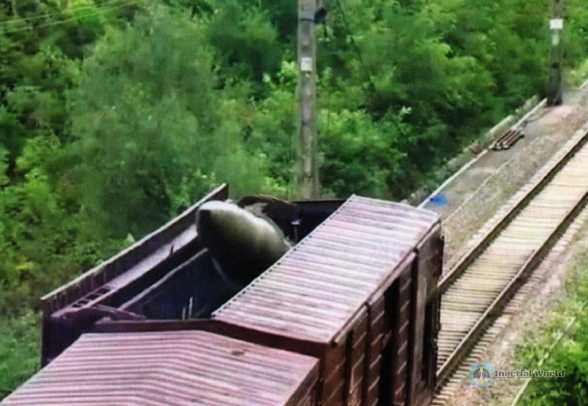
Missile unit
From the public pictures, the missile launched by the railway mobile launch this time is very similar to the solid-fuel missile GLBM-1, which was previously improved from the "Polaris" 1 submarine-launched missile. The outside world believes that it imitates the Russian "Iskander" missile. The missile launched this time is believed to be the extended-range GLBM-2 of the GLBM-1, which is called KN-23 in the West (called "Mars" 11 in North Korea). KN-23 first appeared on May 4, 2019. This launch is called a training launch, which shows the effectiveness of North Korea’s strikes on coastal islands and reefs. According to the published photos, the KN-23 is similar to the Russian "Iskander" in appearance, but its size and performance are completely out of the framework of the latter. The diameter of the "Iskander" is about 0.91 meters and the length is 7.28 meters. The diameter of the KN-23 is 1.1 meters and the length is 8.7 meters. Especially from the tail picture, the solid engines of the two are completely different. The range of the KN-23 has been expanded to 800 kilometers, and the outside world estimates that its warhead mass has reached 2.5 tons, far exceeding the range of the "Iskander" of 300 kilometers (export type) and 500 kilometers (self-use type).
Support system
From the video, it can be seen that before the missile was launched, the launch personnel quickly deployed from the carriage between the train power locomotive and the launch carriage. This carriage retains the flat sliding door in the middle of the train, but does not design the flame exhaust port on the front and rear sides of the carriage. The workbench in the carriage can be seen from the open carriage door. According to technical principles, since the missile system is mobile and long-distance by rail, all elements of missile launch should be concentrated in these two carriages. The second carriage has become a launch vehicle. In addition to power and some detection equipment, it is impossible to set up a personnel activity cabin. Therefore, the missile launch and combat support elements are mainly concentrated in the first carriage. The support carriage should be equipped with launch command and control, medium and long-distance communication systems, geodetic surveying, various element calculations and missile detection units. In addition, as can be seen from the photos, the launch site is located in a col next to the railway tunnel. It is intended to show the outside world that its railway mobile system can be hidden and on standby in any tunnel in the country to ensure that the launch test activities are not discovered by aerospace reconnaissance, and at the same time, it can be launched at any time. In fact, this is just an idealized idea. Because the launch of ballistic missiles not only requires cumbersome pre-launch detection, but also requires close communication with the outside world at all times. Wireless communication not only has a limited number of channels, but is also easy to be monitored. In actual combat, it also relies on wired communication. Therefore, we can see that there are dense telephone poles around the tunnels and launch points selected by North Korea.
Performance characteristics of North Korea’s railway mobile missile system
Simple organization and fast combat response
The biggest difference between the North Korean system and the Russian and American systems is that it only consists of one train head and two carriages, which minimizes the system composition, not only reduces the possibility of exposure, but also makes its combat support easier, thereby improving the combat response speed. From the video, the onboard combat personnel of the North Korean railway missile system are only about one platoon in size. Even if the support personnel who may be waiting in the nearby tunnel area are included, it will not exceed one company.
The railway mobile missile force announced by North Korea this time is a regiment-sized unit. According to North Korea’s "three-three system", there may be 9 launch trains with the above-mentioned organization scale. Compared with the organizational scale of the Soviet/Russian SS-24 railway missile train, which is one train or one regiment, it is obviously much more powerful. Although North Korea’s conventional missile combat unit lacks comparability with the SS-24 nuclear missile unit, it can reflect the simplicity and efficiency of its organization. In use, the three-car formation of North Korea is obviously easier and faster than the formation of 17-19 cars of SS-24 missiles. The key is that the marshaling yard, standby hangar or tunnel required for concealment are much smaller. This is actually a unique design made by North Korea based on the fact that its railway facilities are much smaller than those of the Soviet Union/Russia. Although increasing the number of launch vehicle formations can increase the unit firepower density, the larger load limits the maneuvering speed: the larger scale limits the use of supporting facilities. This small unit formation is more suitable for maneuvering and concealment in the mountainous terrain in the north of the Korean Peninsula.
In addition, from the video and observation results released by the intelligence department, the interval between the two missiles launched by North Korea this time is only 5 minutes, which shows that its reaction is fast and the launch interval is very small, which can form a denser suppressive firepower effect.
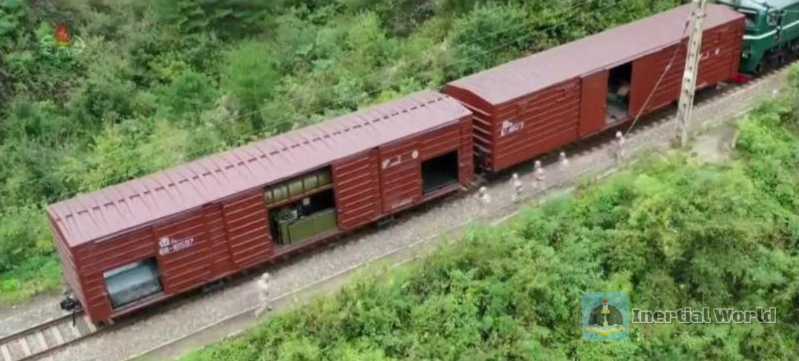
Easy to deploy and wide mobile area.
"The railway mobile missile system is an effective counterattack method. It can be deployed in dispersed areas across the country to carry out heavy strikes on threatening forces at multiple points in time. The military and relevant departments need to continuously improve tactical plans based on geographical conditions and the actual situation of the country to maximize the role of this system." Although North Korea’s railway technology is relatively backward, it built an extensive railway line system as early as the Japanese occupation era in the early 20th century. After the Korean War, with the help of the Soviet Union and China, it mastered the technology of building special trains. Its railway lines are not only densely distributed in the plains of the east and west coasts, but also crisscrossed in the central mountainous areas. There are many culverts, tunnels and mountains here, which can become natural missile concealment caves. Russian expert Vladimir Khrustalev believes: "North Korea’s choice of such a launch platform can economically ensure continuous patrols, duty and rapid response. At present, any train running in the North Korean transportation system may be regarded as a potential railway mobile missile by the US and South Korean intelligence agencies." It can be seen that the railway mobile method will provide North Korea with more ways to disperse and deploy numerous missile weapons. This method can bring serious challenges to the opponent’s reconnaissance and monitoring. The US media said that the special mountainous environment of the Korean Peninsula allows North Korea’s railway mobile missiles to not only move quickly, but also use a large number of railway tunnels as ready-made solid shelters, increasing the difficulty for enemy forces to search and destroy these mobile missiles, and effectively enhancing the deterrence capability against the United States and South Korea.
Sufficient firepower, powerful strike
North Korea’s missile launch carriage follows the two-missile configuration of the road motor vehicle carriage, but in order to better adapt to the internal space of the standard railway carriage, the two missiles are placed in an overlapping manner, that is, the two missiles can be erected from both ends almost at the same time, and respectively launched using the flame exhaust ports at the bottom of the carriage on both sides. It is not yet known whether it has the ability to launch two missiles at the same time, but the mode of two missiles in one carriage increases the firepower capacity of the missile launch unit by several times, which is obviously more efficient than the mode of one missile in one carriage of the US and Russian railway mobile missiles. The head-to-tail overlapping configuration also reduces the mutual influence between the operation preparation and launch of the two missiles after erection, and reduces the launch preparation time of the missile. Judging from the test results, the missile’s flight distance reached 800 kilometers, which can cover the entire territory of South Korea and parts of Japan. Compared with its predecessor GLBM-1, the warhead length of KN-23 has increased by more than 2/3, which allows it to carry more explosives, even penetration devices, or use ground-penetrating and submunitions, and can strike many high-value targets such as underground facilities, troop concentrations and high-tech weapons.
Universal equipment, low difficulty in support
The composition of North Korea’s railway missile system uses equipment that is common to railway transportation and road mobile launch as much as possible, reducing special designs, making it simpler to operate and greatly reducing the difficulty of support.
The first is the missile launch system, which basically uses the road mobile launch equipment. From the outside, the two erection and hydraulic actuation systems in the launch car, as well as the launch control, geodetic measurement and system detection systems in the support car, can be used with the road mobile system. It should be said that these equipment themselves are transplanted from the road system.
The second is the missile carrier/launch system, which basically uses the railway transport train car and standard locomotive. The appearance of the support car and the launch car is almost the same as that of a standard train car, which not only camouflages but also makes repair, maintenance and storage operations universal and simple.
Third, the missile adopts a hot launch method, that is, after the missile is erected: the hot flame ejected from the tail of the missile is discharged to both sides through the gas cone and the flame exhaust groove, which is different from the cold ejection method adopted by the Soviet/Russian SS-24. This reduces the gas generator required for the launch system, greatly reduces the impact on the chassis of the car at the moment of launch, and protects the launch vehicle while simplifying the launch.
Fourth, the requirements for launch conditions are low. Because the North Korean railway network is relatively backward, unlike the United States and Russia, there are complex high-voltage contact networks above the electrified railway lines. Even if there are some electrified railways, the contact networks above are mostly simply suspended and can be easily temporarily removed. The Russian SS-24 needs to design a device specifically to safely open the contact network for the erection and launch of the missile.
The foundation is backward, but the potential is great
From the video, it can be seen that both the front of the railway missile train and the wire facilities around the railway line are relatively backward and old. But it should also be noted that North Korea has completed the development of the railway mobile system by simply renovating the old train with what it has. Although it is not comparable to similar systems in the United States and Russia, North Korea’s mountainous environment has led to a large number of railway tunnels. In addition, the small formation of North Korean missile trains is also conducive to dispersing and hiding in tunnels at ordinary times - consistent with its positioning as a "counterattack weapon to strengthen the country’s war deterrence." From the perspective of development route, North Korea has combined its own needs and technical reality to embark on a weapon development path with North Korean characteristics. From the perspective of technical performance, the system is not suitable for transformation into a strategic missile mobile platform, but there is still great potential to be tapped. First, the two "Mars" 11 in the launch vehicle can be replaced with a single "Mars" 10, or the "Polaris" 3 solid medium-range ballistic missile under development, with firepower that can cover Japan and even Guam in the United States. Second, the firepower capacity of each combat unit can be increased by increasing the number of trains in modular combination. The current nose power can at least increase 3 sets (6 carriages) of launch units.
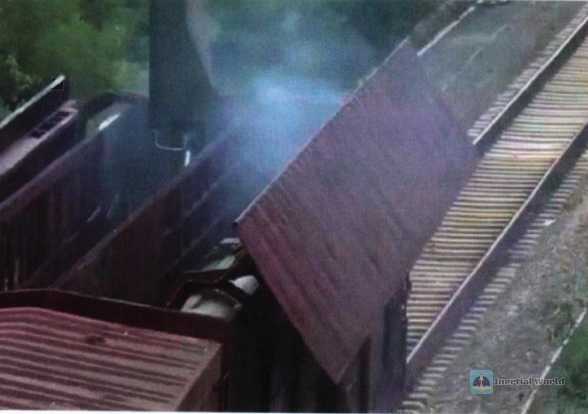
Deployment and application of North Korea’s railway mobile missile system
Combat deployment
From the news released by the North Korean media, the launch was carried out by the newly established North Korean railway mobile force at the regiment level. Park Jong-cheon, secretary of the Central Committee of the Workers’ Party of Korea, revealed that he would explore the issue of accumulating the actual combat operation experience of the railway mobile missile regiment as soon as possible and expanding it into a brigade. According to the North Korean military organization practice, the regiment-level troops usually have 3 combat battalions and support units, while the brigade-level troops may have 4-5 combat battalions and support units, and the unit leader’s level is half a level higher. It can be seen that the expansion from the regiment to the brigade is not only an improvement in level, but also includes the increase in missile combat units. In the video released this time, the entire launch was almost carried out by a platoon of troops (the direct support force should be at least a company), but the combat support and logistics support forces including testing, transportation, communications, logistics, and guards should still be a complete combat unit of a battalion, that is, the maneuvers within a combat area should be a battalion of troops.
Based on the trajectory monitored, the South Korean General Staff deduced that the launch point was near Yangdeok, South Pyongan Province. Yangdeok is an important city in central North Korea. There used to be a missile base of North Korea here, which deployed the "Mars" 10 medium-range missile. According to the fact that a Soviet missile base is usually organized at the division level, the current railway missile regiment should be affiliated with this base. Although North Korea claimed that the troops received an order to move to the Yangdeok launch point in the early morning, the mobile missile system usually cruises in a fixed area and will not move across regions to a large extent. In addition, the railway mobile system in the training and testing stage is unlikely to be far away from the maintenance and support base. In addition, the mobile launch of ballistic missiles usually requires pre-determination of the launch point data. Therefore, the so-called maneuver is likely to be just a planned maneuver within the cruise area, and it will eventually return to the pre-designed launch point for launch training. Moreover, Yangdeok is located in the mountainous area in the central and northern part of North Korea. It is not only hidden, but also can move quickly in any direction. Therefore, the Yangdeok missile base should be North Korea’s first railway mobile missile base.
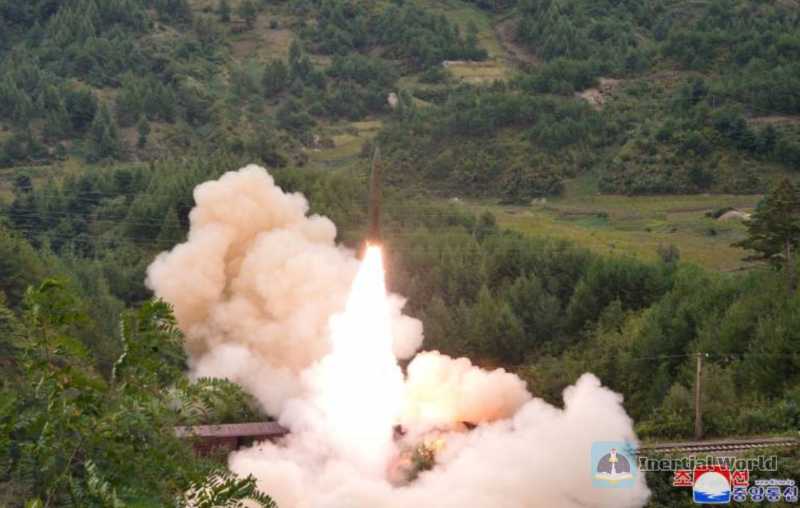
Position construction
Based on the trajectory, the South Korean Army Chief of Staff deduced that the launch point was near Yangdeok, South Pyongan Province. Later, the outside world found the launch point in front of a small tunnel 14 kilometers northeast of Yangdeok based on satellite maps. From the satellite images and videos, the launch point here is located at the entrance of a valley about 200 meters outside the tunnel entrance. The choice of this place as a launch point was actually strictly screened. First of all, the tunnel here can be used as a shelter for missile trains to standby and a test position for missiles. After the transformation, the tunnel can become a missile standby position under emergency conditions by adding lighting and water and power supply equipment. Missiles can complete testing and assembly of some parts here, and even docking of warheads with missile bodies. These preparatory tunnels can also be excavated and expanded to become missile caves for missile storage and assembly. Secondly, the launch point is located at the entrance of a valley outside the tunnel entrance. Although there are higher mountains around the tunnel, there are valley entrances and open areas on the left and right sides of the launch point, and there is even a water system. This ensures that the tail flame derived from the missile launch will not be blocked by the mountain or ignite vegetation, thereby bringing unsafe factors. Finally, from the video, we can see that there are continuous electric poles along the railway line. The lines hanging on the inside of these poles have porcelain insulators, which should be the 10 kV high-voltage lines that were hung later, and the outer side should be 380 kV power lines. There seems to be a communication cable mounted on the lower end of the inner side. It can be seen that the most basic power and communication conditions for launch preparation activities such as missile testing are guaranteed here. The permanent station of North Korea’s railway mobile missiles should rely on the original Yangde missile base, and the field position should be selected from similar sites around Yangde. In the video, after the missile maneuvers to the preset position, the roof opens and the launch arm connected to the missile moves to the launch position. The doors on both sides are also opened to allow the rocket engine tail flame of the missile to be discharged from both sides. After the launch, the missile launch compartment hatch is closed, the troops quickly withdraw the jack and other auxiliary equipment, and then the personnel withdraw into the carriage, and the train urgently maneuvers to withdraw from the launch position and enter the tunnel.

In general, the emergence of the railway mobile missile system indicates that North Korea has completed the development stage of simple missile strike performance and has begun to develop in the direction of combat and practicality, thus possessing real deterrence capabilities.


